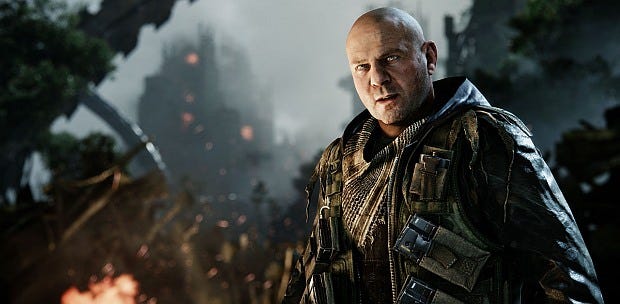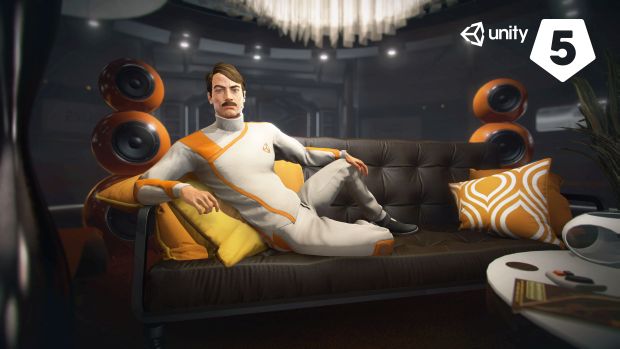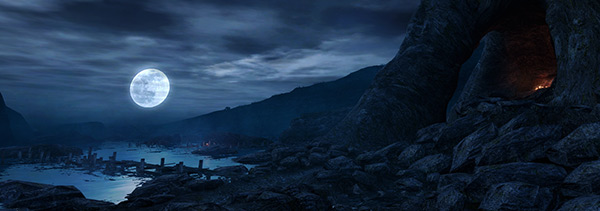Photorealism Is Crucial To Games
And it's worth celebrating.
Global illumination.
Volumetric clouds.
Sub-surface scattering.
These are words that make me hot.
But I know this feeling is forbidden. I should care about games, not the empty pursuit of photorealism. But oh my, it’s so exciting, and not empty. In fact, I think that right now photorealism is becoming crucial to games, and that we should celebrate it.
I love Unreal Engine 4. I like watching the CryEngine toad. I love Koola. I installed Unity on the strength of seeing the trailer with the cool seventies sci-fi porn man (I couldn’t program. Still can’t.)
I love realtime shadows, and I can’t bear it when something in view doesn’t throw them. I love examining wood grain in The Vanishing of Ethan Carter. I love the translucency of tropical fronds in Far Cry 3. I love the contrasts in sheen as the camera pans across a puddle on wet tarmac in GTA V. (I used to harbour the same feelings for the Gouraud shading in TIE Fighter.)
I love the thought that some nerd programmers have gone out into the real world just to look around and break it down into a series of visual components. I imagine them figuring out which are critical to making a realistic scene, given the power of their PC at the office, and then how to emulate it in code. I love that in doing so they felt the warmth of the sun on their pallid skins and the wind among the hairs on their forearms.
For me, photorealism is an inextricable part of my enjoyment of games. Sorry. I love Metal Gear Solid 4: Ground Zeroes: that lighting, Snake’s fluid animation, 60 frames a second. Photorealism in games isn’t just something static. It has to move. I love the slow-motion crunching and rending of steel in BeamNG. But it’s especially the reality I know from it being captured on film. For me, the muddy Polaroid-ish look of P.T. really pops: a potent blend of grimy horror flick and the intimacy of instant photographs.
I think I can see some good reasons why it’s not right to enjoy this stuff so much. Photorealism is an expensive distraction from what makes games valuable, right? It costs so much to produce but it doesn’t specifically lead to great progressive design. It’s dumb window dressing. Anti-art. It’s a quick wow; the lowest common denominator for the greatest price.
It also serves the ludo-industry complex, funding hundreds-strong farms of content producers at Electronic Arts and Ubisoft, and it forces you to buy new graphics cards. But there’s always another level of AA or a sharper texture resolution, just out of reach. The framerate can always be higher. Approaching reality only accentuates imperfection, and big business cashes in.
I don’t care. Being honest about it, photorealism is all I ever wanted from games. And I’m going to risk saying that it’s pretty likely that, at least at some point, it’s all you wanted from games, too. Certainly, for my 10-year-old son, visual fidelity is one of the first things he points out about a game. Anything that looks off is immediately noted, a black mark for which the game has to work hard to make up.
Now, I also love stylised games, because I love anything with considered and skilful art direction. And I’m arguing here that realism is also art directed. The judicious application of a little ambient occlusion here, depth of field there, and yes, even chromatic aberration. I think of those programmers, distilling reality with such care and attention, picking through their materials and applying them, just so. Their decisions and deep craft is worthy of deep appreciation.
Alien Isolation’s look is just marvellous, isn’t it, with those plump shadows and soft focus. The future through 1970s cinematography. I really like Batman: Arkham Knight’s, too, with its rivulets down a scratched metal breastplate. I feel I can reach into both games and feel them, and both speak purely to their themes and settings. Come on, Batman’s rippling stretched cape, streaming with rainwater!
They also give so much to look at, to enclose oneself within. A walk through them is to observe and soak in an atmosphere. Today, so many games are exactly about this. Not just Dear Esther and its progeny (incidentally, Everybody’s Gone to the Rapture shows The Chinese Room is right on my wavelength, because it’s all about making a postcard Shropshire village), but also all those survival and horror games, where reality is the ruse we’re meant to be buying into.
I know, yes, Minecraft and The Long Dark and White Night (but check out those shadows in White Night). Minecraft’s in a world of its own, and it’s probably more about creativity than survival. The Long Dark looks beautiful to me, it really does, but I would also love to explore a more visually rich world. It might even help me brave that damn wolf that keeps hanging around the door to my hideout. ARK: Survival Evolved definitely benefits from all that lushness (even if it tends to kill the performance on my otherwise game-friendly PC). That richness makes you want to explore, because it provides intrinsic reward in just going out into the world.
Horror games also tend to revolve around detail, from Alone in the Dark on. Going back to P.T., could that heavy atmosphere be drawn in such a small environment without all the lifelike detail? Not that it only applies to horror games: could Los Santos feel as special without the tufts of grass growing between concrete pavement slabs, different coloured headlights, and highway-side drainage ditches?
But photorealism dates so fast, and it’s so greedy for power, isn’t it? I certainly concede the costs, from the poor bastard artists having to draw grass and mud textures to the fact that even the best graphics card on the market will be superseded in months. Yet, many of the other great things today about games, such as the extraordinary breadth of visual styles to indies getting to play around with the latest and best 3D engines, are the result of the top end pushing further. This stuff really does trickle down. With the pursuit of photorealism everyone benefits. It’s our duty to want better.














